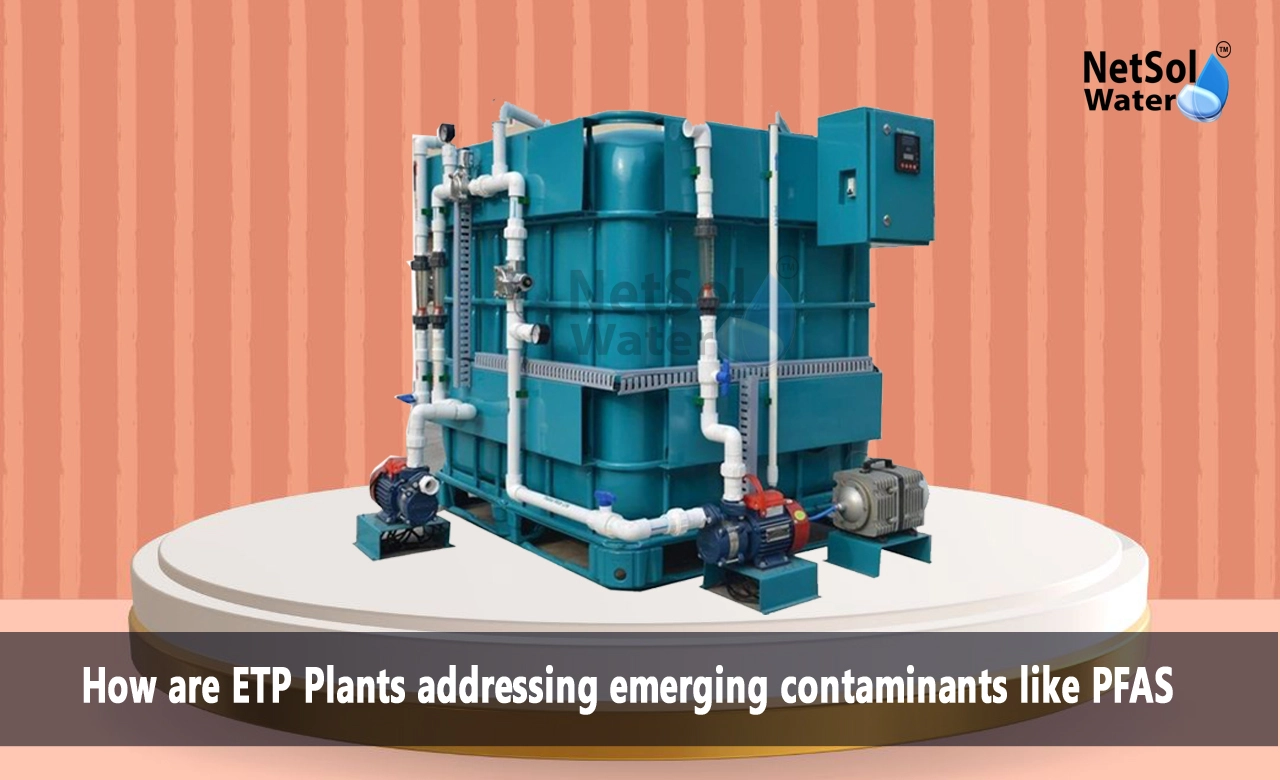How are ETP Plants addressing emerging contaminants like PFAS?
Clean water feeds life and protecting it deserves our attention. PFAS, a category of persistent chemicals has recently emerged as a major danger to water quality. Water treatment plants globally now face the task of removing these toxins. We will looks into the unique techniques wastewater treatment plants take to tackle PFAS pollution and conserve our valuable water supplies.
What Are PFAS?
Industries have employed PFAS or per- and polyfluoroalkyl compounds for decades in diverse goods. These man-made compounds repel water and oil making them valuable in non-stick cookware fire fighting foam and water-resistant clothes. Scientists and authorities have voiced concerns about their environmental persistence and associated health consequences.
The PFAS Challenge for Effluent Treatment Plants
PFAS compounds represent a considerable challenge to conventional water treatment systems. Their remarkable stability and resistance to breakdown have earned them the label "forever chemicals." Effluent treatment plants currently struggle to eliminate PFAS from wastewater before releasing it back into the environment.
Identifying PFAS Sources
Effluent treatment plants must first determine PFAS contamination sources before initiating treatment. This technique involves:
1. Surveying local industries comprehensively
2. Analyzing wastewater samples for PFAS compounds
3. Working with regulatory agencies to track potential sources
By identifying PFAS pollution origins treatment plants can partner with polluters to limit contamination at the source. This preventive strategy considerably eases the pressure on treatment facilities.
Advanced Treatment Technologies
Effluent treatment plants utilize several modern methods to handle PFAS pollution. The most promising strategies include:
1. Granular Activated Carbon (GAC) Filtration
GAC filtration offers considerable potential in eliminating PFAS from water. Water travels through carbon particles which absorb PFAS chemicals. This approach requires frequent carbon filter replacement which might prove pricey.
2. Ion Exchange Resins
Ion exchange technique collects PFAS chemicals using specific resins. PFAS molecules exchange with innocuous ions as water runs through the resin. This highly successful approach requires regular resin regeneration or replacement.
3. Reverse Osmosis
Reverse osmosis filters out pollutants like PFAS using a semi-permeable membrane. While extremely effective for PFAS removal this energy-intensive approach produces substantial effluent.
4. Advanced Oxidation Processes
These techniques break down PFAS compounds utilizing intense oxidizing chemicals like ozone or hydrogen peroxide mixed with UV radiation. This method remains at the experimental stage for large-scale PFAS treatment.
Combining Technologies for Maximum Effectiveness
Many effluent treatment plants acquire the best results for PFAS removal by combining approaches. A treatment train could include:
1. Pre-treatment with coagulation and flocculation
2. Primary treatment utilizing GAC filtering
3. Secondary treatment with ion exchange resins
4. Final polishing using reverse osmosis
This multi-barrier technique enables optimum PFAS removal while tackling other pollutants.
Monitoring and Testing Challenges
Accurate monitoring and testing pose substantial difficulties in PFAS treatment. PFAS chemicals often exist at very low quantities making detection difficult. Effluent treatment plants invest in improved analytical equipment and develop new testing techniques to identify and monitor PFAS levels reliably.
Regulatory Landscape and Compliance
The regulatory climate surrounding PFAS moves rapidly. Treatment plants must stay current with changing rules and regulations. This involves:
1. Communicating regularly with environmental agencies
2. Participating in industry working groups
3. Investing in personnel training and education
As laws tighten wastewater treatment plants must adjust their procedures to meet new compliance criteria.
Cost Considerations and Funding Challenges
Implementing modern PFAS treatment technology can strain finances. Many wastewater treatment plants especially those servicing smaller areas struggle to acquire money for these modifications. Some strategies include:
1. Seeking federal and state grants
2. Exploring public-private partnerships
3. Implementing phased ways to spread costs over time
4. Collaborating with adjacent communities to share resources
Innovation and Research
The field of PFAS treatment evolves rapidly with ongoing development of new technology and methodologies. Effluent treatment facilities work with universities and research institutions to:
1. Test novel treatment methods
2. Develop more cost-effective solutions
3. Explore potential biological therapy alternatives
These collaborations foster industry innovation and help identify more sustainable long-term solutions to PFAS contamination.
Public Awareness and Education
Effluent treatment facilities play a significant role in educating the public about PFAS and water quality issues. Many facilities employ outreach activities to:
1. Explain PFAS-associated dangers
2. Describe treatment efforts and their efficacy
3. Provide suggestions on decreasing PFAS exposure in daily life
By developing public understanding treatment facilities gain support for their work and promote water conservation.
Conclusion
Effluent treatment plants have a complicated and continuous problem in tackling PFAS pollution. These facilities make important progress in conserving our water resources through advanced technologies innovative approaches and partnership with researchers and regulators. As we move forward the lessons learnt in handling PFAS will surely lead to more resilient and effective water treatment systems capable of addressing new emergent pollutants.
To explore customised commercial RO plants, Industrial RO plants, ETP or STP solutions for your needs in your areas and nearby regions, contact Netsol Water at:
Phone: +91-965-060-8473, Email: enquiry@netsolwater.com



